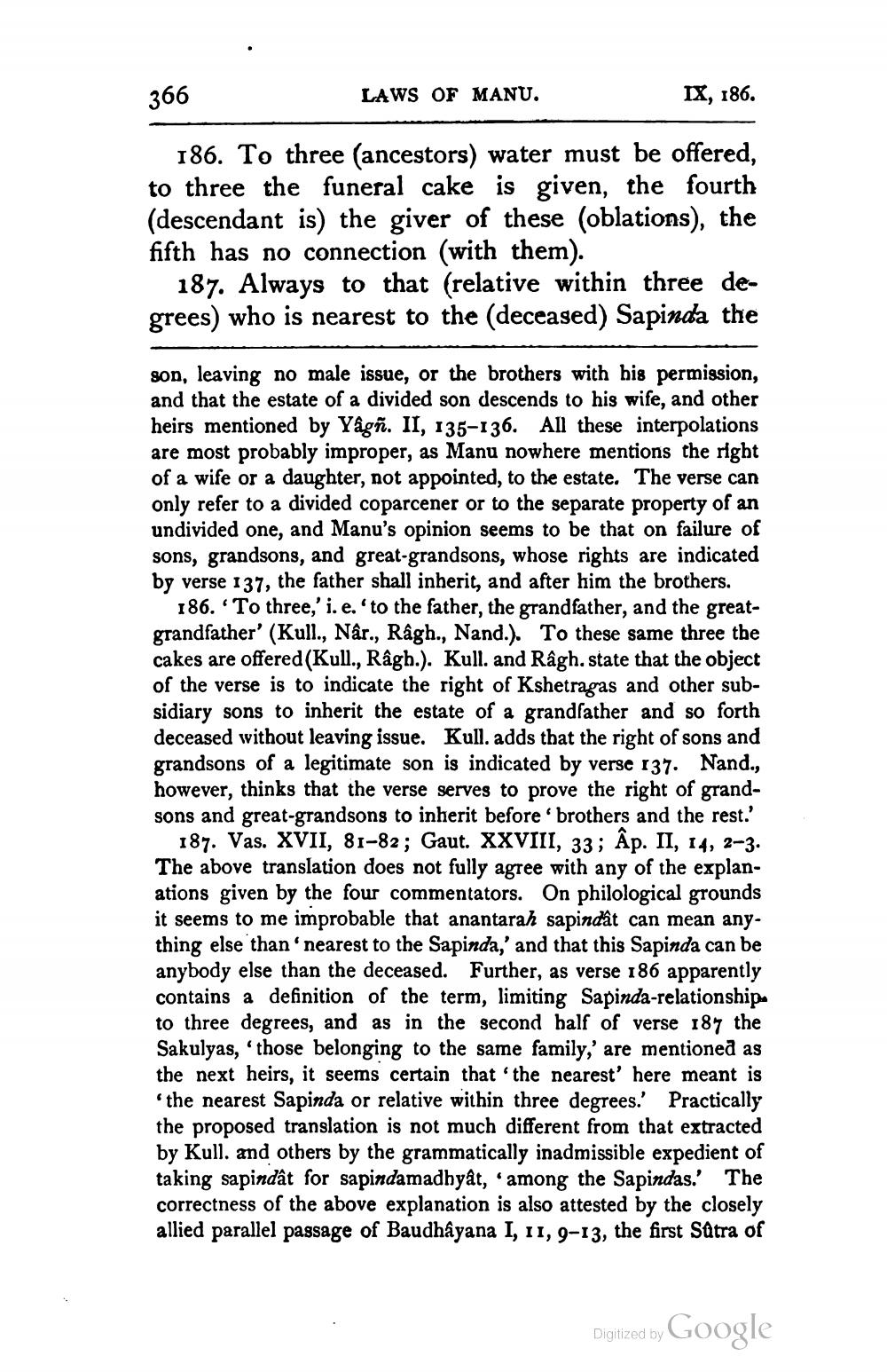________________
366
LAWS OF MANU.
IX, 186.
186. To three (ancestors) water must be offered, to three the funeral cake is given, the fourth (descendant is) the giver of these (oblations), the fifth has no connection (with them).
187. Always to that relative within three degrees) who is nearest to the (deceased) Sapinda the
son, leaving no male issue, or the brothers with his permission, and that the estate of a divided son descends to his wife, and other heirs mentioned by Yâgñ. II, 135-136. All these interpolations are most probably improper, as Manu nowhere mentions the right of a wife or a daughter, not appointed, to the estate. The verse can only refer to a divided coparcener or to the separate property of an undivided one, and Manu's opinion seems to be that on failure of sons, grandsons, and great-grandsons, whose rights are indicated by verse 137, the father shall inherit, and after him the brothers.
186.'To three,' i.e.'to the father, the grandfather, and the greatgrandfather' (Kull., Nár., Râgh., Nand.). To these same three the cakes are offered (Kull., Râgb.). Kull. and Râgh, state that the object of the verse is to indicate the right of Kshetragas and other subsidiary sons to inherit the estate of a grandfather and so forth deceased without leaving issue. Kull. adds that the right of sons and grandsons of a legitimate son is indicated by verse 137. Nand., however, thinks that the verse serves to prove the right of grandsons and great-grandsons to inherit before 'brothers and the rest.'
187. Vas. XVII, 81-82; Gaut. XXVIII, 33; Âp. II, 14, 2–3. The above translation does not fully agree with any of the explanations given by the four commentators. On philological grounds it seems to me improbable that anantarah sapindât can mean any. thing else than nearest to the Sapinda,' and that this Sapinda can be anybody else than the deceased. Further, as verse 186 apparently contains a definition of the term, limiting Sapinda-relationship to three degrees, and as in the second half of verse 187 the Sakulyas, 'those belonging to the same family,' are mentioned as the next heirs, it seems certain that 'the nearest' here meant is 'the nearest Sapinda or relative within three degrees. Practically the proposed translation is not much different from that extracted by Kull. and others by the grammatically inadmissible expedient of taking sapindât for sapindamadhyât, among the Sapindas.' The correctness of the above explanation is also attested by the closely allied parallel passage of Baudhầyana I, 11, 9-13, the first Sätra of
Digitized by Google




